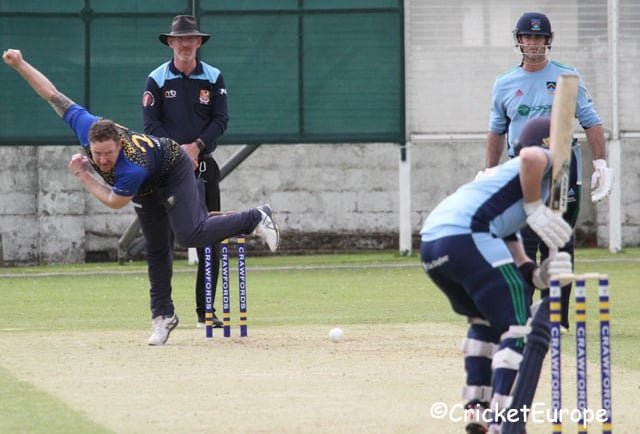What’s the key to being consistent?
Consistency at the crease is what separates good batsmen from great ones. Learn how mastering your mental game, refining your technique, and understanding tactics can make you a dependable run scorer in every match.
Marc Ellison
9/28/20244 min read


A repeatable daily and weekly routine is a good place to start.
The four pillars for performance guide us here: technical, tactical, mental and physical.
Each of these categories needs attention in order for you to be a consistent run scorer.
A routine is something that is developed over time and usually involves a significant amount of trial and error.
So, depending on the stage of your career that you’re at, you might be in the early stages of tinkering , you might know some aspects of your week that work well but not others, or if you’re in the latter stages of your career, you should have a better feel for what is working and what isn’t.
For more detail about developing your daily/weekly routine, click here (insert URL).
Mental
Maintaining a consistent level of confidence is the easy answer to this one.
But, how do you do that?
Visualisation…
Have you ever tried to picture yourself batting in your mind’s eye?
It’s a powerful place.
It’s powerful because your subconscious mind doesn’t know the difference between real or imagined.
So, if you imagine yourself scoring runs against the best bowlers in the world, or even the bowlers you’re facing in your next match, you’re making deposits into your confidence bank.
Learn how to visualise here (link to article).
Technical
What do you need to improve with your technique at training to best prepare you for the week ahead?
Answering some of these questions below will help you work this out:
What are the pitch conditions likely to favour? Swing/seam/spin/fast/slow?
If you’re a top order player, you may wish to spend time practicing playing the swinging ball. If you have some new balls available for bowlers or to receive throws, these balls should swing. If not, you can use the bowling machine or end up taping the ball down one side to encourage swing.
What you should focus on with your technique while playing the swinging ball is to play the ball late: let the ball swing and then play the second line (after it’s swung) rather than the first line you see out of the hand.
Slightly loosening your grip on the bat will encourage you to be more relaxed with your hands in the hope of playing the ball later.
If you’re a middle order batsman, and your opponent in the next match has some good spinners, you may wish to spend extra time facing spin on a grass wicket if you can arrange it.
If one of your opponents key bowlers is a leg-spinner, you'll want to face one in training, and one that is similar in style. This might mean contacting an old teammate or an opponent to ask them to bowl at you on another night/training session if your own club team doesn’t have that type of bowler. These are the lengths you should be prepared to go to in order to get the results you desire.
During this practice, you should focus on seeing the ball out of the bowler’s hand and watching the seam to give yourself the best chance of knowing which way the ball will turn.
The less you focus on what shot you’re going to play and the more you focus on simply seeing the ball out of the hand and picking up it’s trajectory (if the ball goes above the hand then it’s likely to be fuller compared to if the ball comes out of the hand and is flatter it’s likely to be shorter), the more chance you give yourself of playing instinctively. This offers you the best chance to get into the best position for each delivery.
Tactical
If you’ve identified the opposition has a good left-arm spinner and you don’t have a scoring plan against that type of bowler, this should become your priority for the week.
Do you have video available to watch the bowler in a match?
If that answer is yes, you can watch how other batsmen approach that bowler and where they’re scoring most comfortably with low risk.
Do those scoring shots exist within your game?
Yes – start practicing them in training.
No – keep looking at the video until you notice some viable options you’re comfortable taking on in the match.
You may need to start working on a new shot specifically for a bowler eg using your feet.
I would recommend taking more than a week to learn a new shot, however depending on your capability, it may be necessary in a short space of time.
Using your feet to leave your crease and attempt to get to the ball on the full is a great option when played well, but you do need to factor in some variables.
Does the bowler get much overspin which causes the ball to drop suddenly?
Is the wicket likely to turn sharply?
These are two factors to keep in mind.
Once you’ve committed to practicing the shot, you’ll ideally have a left-arm spinner to face at training. If not, make the most of what you have eg a leg-spinner or even just someone throwing the ball with a little loop on it.
Trajectory out of the hand is the main focus. Read more on that topic here (insert URL).
Physical
Ensuring you reach game day with your body feeling fresh and ready to go is likely to enhance your performance.
Therefore, you want to ensure that any cardio or weight training has been done earlier in the week.
The day before the match, you could look at doing a light gym session with either lighter weights than you’d usually lift or fewer reps.
You could also use the day before the match for some light batting practice and a stretching/yoga session.
By giving each pillar focused effort and attention every week, you’re setting yourself up for success.
Finally, something else to be aware of is your emotional state.
Have you had a taxing week with work, a challenging relationship, your personal finances or perhaps you're struggling for quality sleep?
These will all impact your ability to perform in the middle in some way.
Sometimes, you can use your innings to get away from any stress you're dealing with off the pitch but you may need to give yourself some leeway when it comes to peak performance if you're struggling with one of the above.
Once again, finding a solution to help resolve these stressful issues is going to help save some much needed energy to achieve your peak performance for a sustained period.
